Nanodiamond qubits and photonic crystals
Milestone reached on the path to integrated quantum technology.
Nov 30th, 2010
Read more
Milestone reached on the path to integrated quantum technology.
Nov 30th, 2010
Read more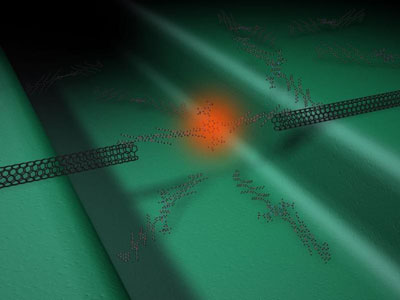 Die Arbeit der Forscherteams um den Chemiker Prof. Marcel Mayor (KIT und UB) und den Physikern Dr. Ralph Krupke (KIT) und Prof. Hilbert v. Loehneysen (KIT) stellt einen wichtigen Beitrag dar fuer die Entwicklung neuer optoelektronischer Bauelemente auf Basis einzelner Molekuele.
Die Arbeit der Forscherteams um den Chemiker Prof. Marcel Mayor (KIT und UB) und den Physikern Dr. Ralph Krupke (KIT) und Prof. Hilbert v. Loehneysen (KIT) stellt einen wichtigen Beitrag dar fuer die Entwicklung neuer optoelektronischer Bauelemente auf Basis einzelner Molekuele.
Nov 30th, 2010
Read moreThanks to collaborative work between scientists in Donostia-San Sebastian and the University of Kiel (Germany) it has been shown that it is possible to determine and control the number of atoms in contact between a molecule and a metal electrode of copper, at the same time as the electric current passing through the union being recorded.
Nov 30th, 2010
Read moreThe generation of electricity and heat with no pollution and with considerably less emission of the greenhouse gas CO2 sounds too good to be true. However, it is possible with the so-called SOFC fuel cells, which Risoe has been conducting research into for over 20 years. The technology is now on its way to reach Danish and international companies including consumers.
Nov 30th, 2010
Read more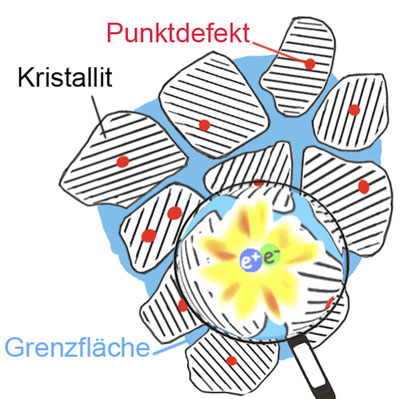 Certain structural defects in materials are what make innovative nanocrystalline bulk metals very hard and yet readily malleable. As these defects are found at the atomic level of the metal structure they are difficult to investigate in experiments. However, Austrian scientists have recently taken a significant step towards understanding such atomic defects.
Certain structural defects in materials are what make innovative nanocrystalline bulk metals very hard and yet readily malleable. As these defects are found at the atomic level of the metal structure they are difficult to investigate in experiments. However, Austrian scientists have recently taken a significant step towards understanding such atomic defects.
Nov 30th, 2010
Read moreThe five journals will be in the areas of water technology, oil and gas technology, petrochemicals technology, biotechnology and nanotechnology. They will be published early next year in print and online.
Nov 30th, 2010
Read moreTo culminate the 20th anniversary of its presence in France, the Georgia Institute of Technology is expanding its campus in the northeast region of the country with a new resource center for industry and academic research laboratories.
Nov 30th, 2010
Read moreThis year the agency is encouraging nominations for the design of safer and more sustainable chemicals, processes, and products that will protect the public, particularly children and other sensitive populations, from exposure to harmful chemicals.
Nov 29th, 2010
Read more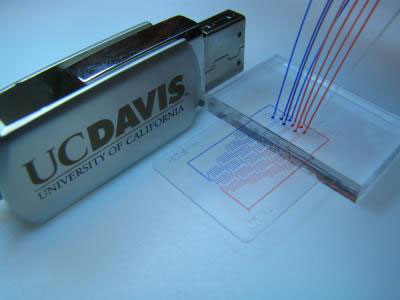 Universal microfluidics connector could find broad use.
Universal microfluidics connector could find broad use.
Nov 29th, 2010
Read more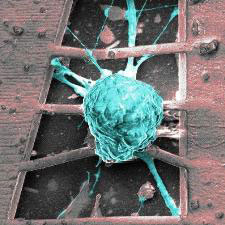 Researcher takes an unorthodox route to understanding the human neurosystem.
Researcher takes an unorthodox route to understanding the human neurosystem.
Nov 29th, 2010
Read more Scientists have found a method that could replace nearly all of the toxic chemicals required to make gold nanoparticles. The missing ingredient can be found in nearly every kitchen's spice cabinet - cinnamon.
Scientists have found a method that could replace nearly all of the toxic chemicals required to make gold nanoparticles. The missing ingredient can be found in nearly every kitchen's spice cabinet - cinnamon.
Nov 29th, 2010
Read more Mimicking the reflective iridescence of a butterfly's wing, investigators at the University of Pennsylvania School of Medicine and School of Engineering and Applied Sciences have developed a color-changing patch that could be worn on soldiers' helmets and uniforms to indicate the strength of exposure to blasts from explosives in the field.
Mimicking the reflective iridescence of a butterfly's wing, investigators at the University of Pennsylvania School of Medicine and School of Engineering and Applied Sciences have developed a color-changing patch that could be worn on soldiers' helmets and uniforms to indicate the strength of exposure to blasts from explosives in the field.
Nov 29th, 2010
Read more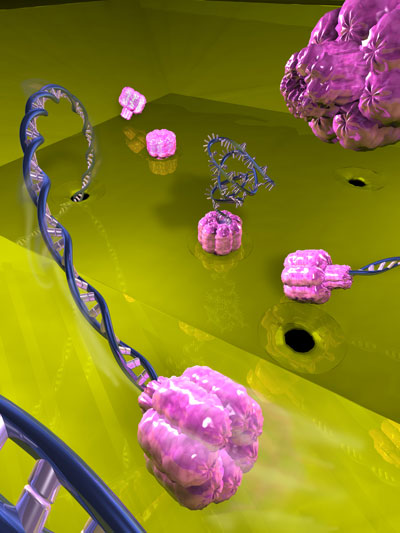 Researchers at Delft University of Technology and Oxford University announce a new type of nanopore device that could help in developing fast and cheap genetic analysis.
Researchers at Delft University of Technology and Oxford University announce a new type of nanopore device that could help in developing fast and cheap genetic analysis.
Nov 29th, 2010
Read moreDesigned for defense and security applications, array achieves sensitivity close to one-thousandth of a degree Kelvin.
Nov 29th, 2010
Read moreDr. Lars Pastewka's and Prof. Michael Moseler's team at the Fraunhofer Institute for Mechanics of Materials IWM in Freiburg/Germany can now reveal the secret of why it is that diamonds can be machined.
Nov 29th, 2010
Read moreAn international team of researchers has succeeded in creating artificial spin ice in a state of thermal equilibrium for the first time. Allowing them to examine the precise configuration of this important nanomaterial.
Nov 29th, 2010
Read more